Loss of regulation of T helper 17 cells: a definitive factor for critical cases of coronavirus disease 2019
One of the greatest challenges in the study of coronavirus disease 2019 (COVID-19) has been to establish the determining factors in the severity of the disease. Through extensive research efforts, a
[...] Read more.
One of the greatest challenges in the study of coronavirus disease 2019 (COVID-19) has been to establish the determining factors in the severity of the disease. Through extensive research efforts, a crucial factor responsible for disease control or exacerbation in COVID-19 has been identified—the regulation of the immune response. The abnormal release of interleukin-1 (IL-1), IL-6, and tumor necrosis factor-alpha (TNF-α) has been extensively studied in the context of the altered immune response observed in severe cases of COVID-19. However, recent attention has turned towards the excessive release of IL-17 and the increased presence of T helper 17 (Th17) cells, the main secretory cells of this cytokine. These factors have garnered interest due to their potential involvement in the cytokine storm observed in severe cases of COVID-19. In this review, it will be delved into the intricate mechanisms by which IL-6 contributes to the differentiation of Th17 cells, resulting in an increase in the population of Th17 cells. Moreover, it will be explored the proportional relationship between the increase of these lymphocytes and the release of IL-17 and other chemokines, which all together play a key role in promoting the chemotaxis and activation of neutrophils. Ultimately, this cascade of events culminates in the generation of tissue damage by neutrophils. Additionally, therapeutic options targeting these lymphocytes and cytokines are explored, providing insights into potential avenues for intervention.
Miguel Angel Pardiño-Vega, Norma Estela Herrera-González
View:1061
Download:25
Times Cited: 0
One of the greatest challenges in the study of coronavirus disease 2019 (COVID-19) has been to establish the determining factors in the severity of the disease. Through extensive research efforts, a crucial factor responsible for disease control or exacerbation in COVID-19 has been identified—the regulation of the immune response. The abnormal release of interleukin-1 (IL-1), IL-6, and tumor necrosis factor-alpha (TNF-α) has been extensively studied in the context of the altered immune response observed in severe cases of COVID-19. However, recent attention has turned towards the excessive release of IL-17 and the increased presence of T helper 17 (Th17) cells, the main secretory cells of this cytokine. These factors have garnered interest due to their potential involvement in the cytokine storm observed in severe cases of COVID-19. In this review, it will be delved into the intricate mechanisms by which IL-6 contributes to the differentiation of Th17 cells, resulting in an increase in the population of Th17 cells. Moreover, it will be explored the proportional relationship between the increase of these lymphocytes and the release of IL-17 and other chemokines, which all together play a key role in promoting the chemotaxis and activation of neutrophils. Ultimately, this cascade of events culminates in the generation of tissue damage by neutrophils. Additionally, therapeutic options targeting these lymphocytes and cytokines are explored, providing insights into potential avenues for intervention.
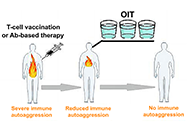 Immune-based, multifaceted inactivation of pathogenic T lymphocytes in treating autoimmune diseasesOpen AccessPerspectiveImmunotherapeutic treatment of autoimmune diseases should aim to inactivate autoaggressive memory T-cells and restore immune tolerance. It is envisaged that three approaches could be used to achieve [...] Read more.Victor Ivanovich Seledtsov ... Alexei A. von DelwigPublished: October 30, 2023 Explor Immunol. 2023;3:506–512
Immune-based, multifaceted inactivation of pathogenic T lymphocytes in treating autoimmune diseasesOpen AccessPerspectiveImmunotherapeutic treatment of autoimmune diseases should aim to inactivate autoaggressive memory T-cells and restore immune tolerance. It is envisaged that three approaches could be used to achieve [...] Read more.Victor Ivanovich Seledtsov ... Alexei A. von DelwigPublished: October 30, 2023 Explor Immunol. 2023;3:506–512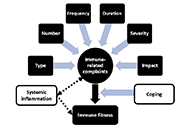 The concept and assessment of immune fitnessOpen AccessEditorialJoris C. Verster ... Johan GarssenPublished: October 27, 2023 Explor Immunol. 2023;3:500–505
The concept and assessment of immune fitnessOpen AccessEditorialJoris C. Verster ... Johan GarssenPublished: October 27, 2023 Explor Immunol. 2023;3:500–505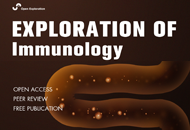 Loss of regulation of T helper 17 cells: a definitive factor for critical cases of coronavirus disease 2019Open AccessReviewOne of the greatest challenges in the study of coronavirus disease 2019 (COVID-19) has been to establish the determining factors in the severity of the disease. Through extensive research efforts, a [...] Read more.Miguel Angel Pardiño-Vega, Norma Estela Herrera-GonzálezPublished: October 16, 2023 Explor Immunol. 2023;3:490–499
Loss of regulation of T helper 17 cells: a definitive factor for critical cases of coronavirus disease 2019Open AccessReviewOne of the greatest challenges in the study of coronavirus disease 2019 (COVID-19) has been to establish the determining factors in the severity of the disease. Through extensive research efforts, a [...] Read more.Miguel Angel Pardiño-Vega, Norma Estela Herrera-GonzálezPublished: October 16, 2023 Explor Immunol. 2023;3:490–499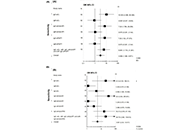 Risk factors and recurrent thrombosis in primary antiphospholipid syndromeOpen AccessOriginal ArticleAim: The study aims to evaluate the incidence of recurrent thromboses in patients with primary antiphospholipid syndrome (PAPS) and its association with the presence of different antiphospholipid [...] Read more.Fariza A. Cheldieva ... Tatiana M. ReshetnyakPublished: October 12, 2023 Explor Immunol. 2023;3:475–489
Risk factors and recurrent thrombosis in primary antiphospholipid syndromeOpen AccessOriginal ArticleAim: The study aims to evaluate the incidence of recurrent thromboses in patients with primary antiphospholipid syndrome (PAPS) and its association with the presence of different antiphospholipid [...] Read more.Fariza A. Cheldieva ... Tatiana M. ReshetnyakPublished: October 12, 2023 Explor Immunol. 2023;3:475–489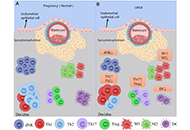 Research progress of immune balance and genetic polymorphism in unexplained recurrent abortionOpen AccessReviewThe etiology of recurrent spontaneous abortion (RSA) is extremely complex, as there are 40–50% of patients with unexplained miscarriages, known as unexplained RSA (URSA). URSA affects approximatel [...] Read more.Yafei Kang ... Donghui HuangPublished: October 12, 2023 Explor Immunol. 2023;3:453–474
Research progress of immune balance and genetic polymorphism in unexplained recurrent abortionOpen AccessReviewThe etiology of recurrent spontaneous abortion (RSA) is extremely complex, as there are 40–50% of patients with unexplained miscarriages, known as unexplained RSA (URSA). URSA affects approximatel [...] Read more.Yafei Kang ... Donghui HuangPublished: October 12, 2023 Explor Immunol. 2023;3:453–474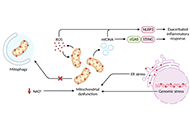 Mitochondrial dysfunction at the cornerstone of inflammatory exacerbation in aged macrophagesOpen AccessReviewImmunosenescence encompasses multiple age-related adaptations that result in increased susceptibility to infections, chronic inflammatory disorders, and higher mortality risk. Macrophages are key in [...] Read more.Rafael Moura Maurmann ... Brandt D. PencePublished: October 11, 2023 Explor Immunol. 2023;3:442–452
Mitochondrial dysfunction at the cornerstone of inflammatory exacerbation in aged macrophagesOpen AccessReviewImmunosenescence encompasses multiple age-related adaptations that result in increased susceptibility to infections, chronic inflammatory disorders, and higher mortality risk. Macrophages are key in [...] Read more.Rafael Moura Maurmann ... Brandt D. PencePublished: October 11, 2023 Explor Immunol. 2023;3:442–452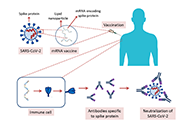 Effect of coronavirus disease 2019 on the vaccine development paradigmOpen AccessReviewVaccines are prophylactic medical products effectively used against infectious diseases. Although a high amount of vaccine studies are conducted at the preclinical stage, the number of approved vacc [...] Read more.Sezer OkayPublished: October 10, 2023 Explor Immunol. 2023;3:433–441
Effect of coronavirus disease 2019 on the vaccine development paradigmOpen AccessReviewVaccines are prophylactic medical products effectively used against infectious diseases. Although a high amount of vaccine studies are conducted at the preclinical stage, the number of approved vacc [...] Read more.Sezer OkayPublished: October 10, 2023 Explor Immunol. 2023;3:433–441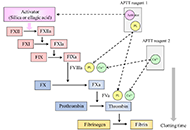 Update on laboratory practice for the diagnosis of lupus anticoagulant and the antiphospholipid syndromeOpen AccessReviewAntiphospholipid syndrome (APS) is defined as an autoimmune and prothrombotic disorder in patients with the persistent presence of antiphospholipid antibodies (aPLs). In the classification criteria, [...] Read more.Osamu Kumano ... Jean AmiralPublished: October 08, 2023 Explor Immunol. 2023;3:416–432
Update on laboratory practice for the diagnosis of lupus anticoagulant and the antiphospholipid syndromeOpen AccessReviewAntiphospholipid syndrome (APS) is defined as an autoimmune and prothrombotic disorder in patients with the persistent presence of antiphospholipid antibodies (aPLs). In the classification criteria, [...] Read more.Osamu Kumano ... Jean AmiralPublished: October 08, 2023 Explor Immunol. 2023;3:416–432